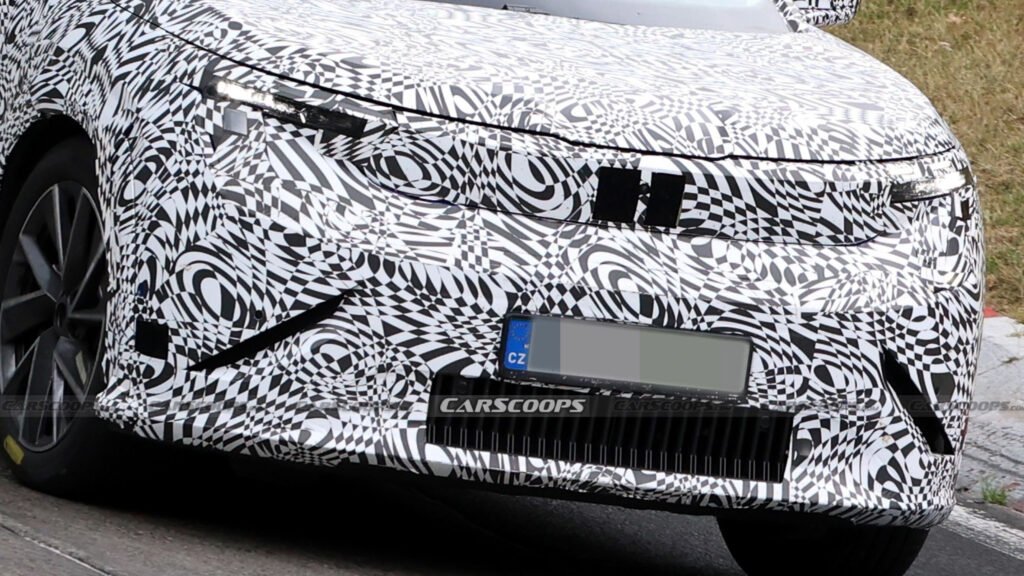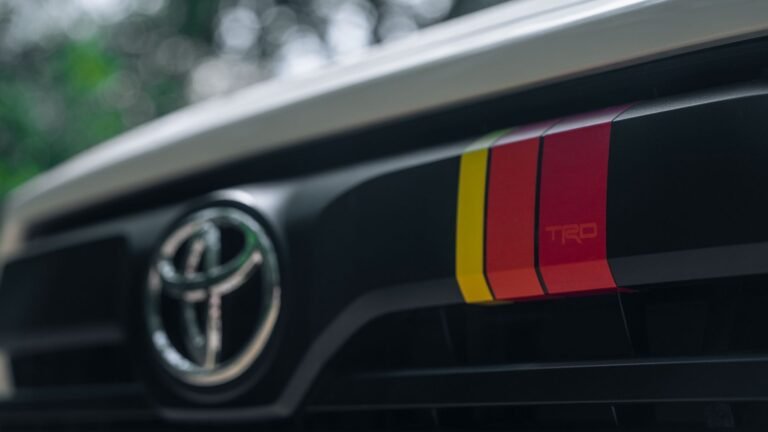

- Skoda is putting its biggest EV yet through its paces at the Nurburgring.
- The Kodiaq-sized three-row SUV is based on 2022’s Vision 7S concept.
- It uses the same MEB platform as VW ID.Buzz minivan and ID.7 sedan.
Skoda’s biggest electric SUV yet is edging closer to production. The upcoming flagship, an answer to the Kia EV9 and Hyundai Ioniq 9, has been caught testing hard at the Nürburgring ahead of a 2026 debut, giving us our clearest look yet at the brand’s future family hauler.
Despite the heavy camouflage, there’s plenty to take in, from the blocky proportions to the brand’s now-signature Tech-Deck front end.
Related: Everything We Know About Skoda’s Biggest Electric SUV
That face, in fact, is a bit of a talking point. Two small upright rectangles have been cut out from the patterned wrap, meaning – intentionally or not – it channels a little BMW energy.
Maybe Skoda’s test team is just having some fun with us, but it’s not the first time Skoda has taken cues from Munich. The previous-generation Octavia’s front end bore more than a passing resemblance to BMW’s twin-kidney setup.
We know from the look of other recent Skoda debuts, including the little Epiq EV, and official teaser images of this big (4.9 m / 193 inches) SUV without disguise, that the final grille will be a smooth strip of black plastic, with some transverse LED lighting segments.
It’s all part of Skoda’s new “Modern Solid” design language, previewed by the 2022 Vision 7S and since rolled out across the brand’s lineup.
SH Proshots
Those teasers also showed distinctive T-shaped LED lights front and rear that, together with the grille and flush door handles, will make it easy to tell the electric seven-seater from its more conservatively-styled combustion counterpart, the Kodiaq.
Power and Platform
Underneath the funky wrap sits the Volkswagen Group’s upgraded MEB platform, the same electric architecture found under VW Group EVs like the ID.Buzz, ID.4 and ID.7. The 7S concept featured an 89 kWh battery and a WLTP range of more than 373 miles (600 km), and those figures should carry over in some form to production.
Buyers can look forward to both rear-wheel-drive and dual-motor all-wheel-drive options, with the latter likely to deliver around 335 hp (340 PS / 250 kW), putting performance roughly on par with the Enyaq vRS.
SKoda
